For additional information relating to this article, please contact:
March 18, 2021NOVA SCOTIA QUARTERLY POPULATION ESTIMATES AS OF JANUARY 1, 2021 The production of the demographic estimates are based on methods and models that allow reliable and accurate population estimates; however, in the context of the COVID-19 pandemic, the assumptions of the models maybe invalid and administrative data sources are not optimal in terms of timeliness and completeness. Statistics Canada made adjustments to some components of the fourth quarter demographic estimates to account for the impact of the COVID-19 pandemic. These adjustments closely follow what was done in the second quarter of 2020. Details can be found in the Q2 2020 technical supplement.
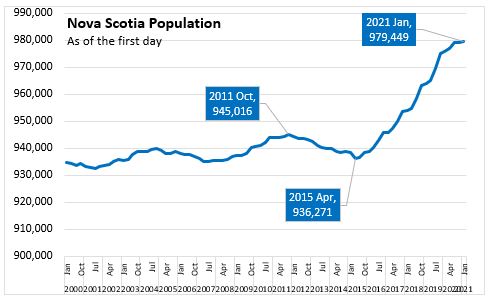
Nova Scotia’s population increased by 360 between October 1, 2020 and January 1, 2021. The population as of January 1, 2021 was 979,449, the highest population for Nova Scotia on record. Since April 1, 2015 Nova Scotia's population has increased by 43,178. This quarter's increase reflects higher net interprovincial migration and immigrants.
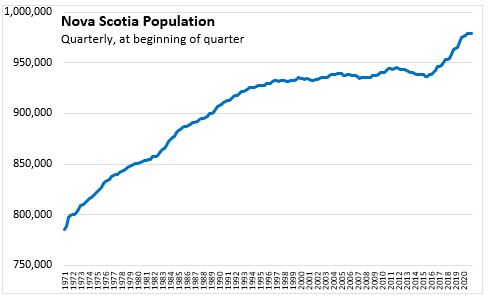
There are seasonal patterns in quarterly population changes, particularly evident in births and migration. In the fourth quarter of 2020, Nova Scotia posted a population increase that offset the decline the previous quarter. Statistics Canada noted that population growth in Canada in 2020 was vastly reduced because of the COVID-19 pandemic.
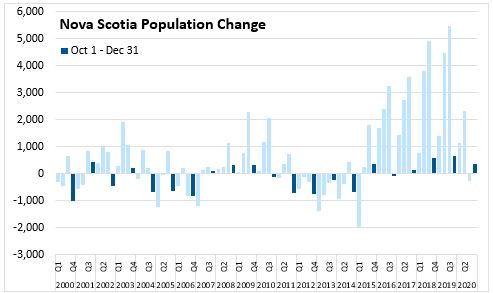
In the fourth quarter, Nova Scotia’s population increased 0.04% compared to the October 1 estimate, while the national population grew 0.11%. Compared with January 1, 2020 Nova Scotia’s population increased 0.36% (+3,551), while the national population grew by 0.39%.

Immigration from other countries has been a strong contributor to population growth in Nova Scotia in recent years. In Q4 2020 immigration slowed as is typical for the season. Nova Scotia received 725 immigrants during the fourth quarter of 2020, the lowest number for a fourth quarter since 2014.

In this quarter, Nova Scotia saw a net loss of 343 non-permanent residents following on the 2,289 decline in Q3 2020.
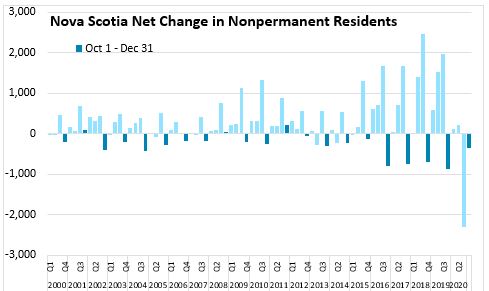
Nova Scotia’s natural population change (the number of births less the number of deaths) has been negative for several years. Between October 1, 2020 and December 31, 2020, there were 1,973 births and 2,621 deaths, amounting to a natural population decline of 648.
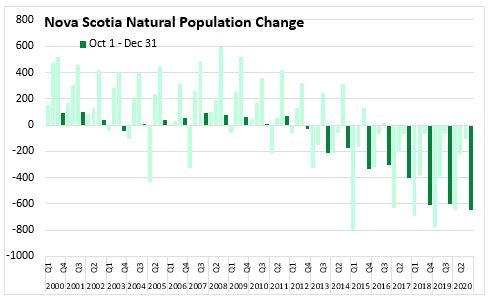
Despite fewer movements between provinces and territories than usual, Nova Scotia posted another net increase in interprovincial migration with a gain of 702 persons. There were 2,620 in-migrants and 1,918 out-migrants to other provinces and territories. Similar to the Q4 gain in recent years. The largest net gains came from Ontario and Prince Edward Island.
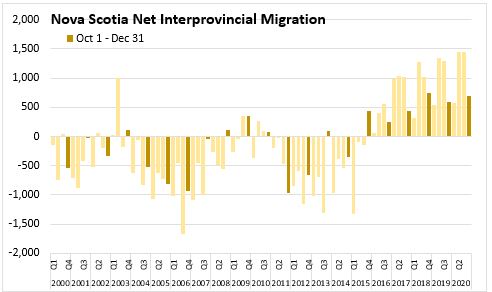
Out-migration from Nova Scotia to other provinces decreased by 458 compared to the fourth quarter of 2019. Out-migration declines were mostly from fewer movers to Ontario, Alberta, and British Columbia.
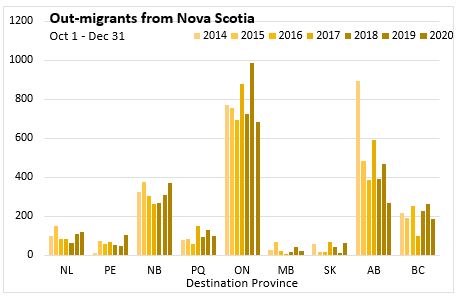
Compared to Q4 2019, in-migrants to Nova Scotia decreased by 375. The largest in-migrant declines were from fewer people moving from Alberta, New Brunswick and British Columbia. There were higher number of movers from Ontario.

Interprovincial migration to Nova Scotia was a net inflow of 702 persons in Q4 2020 (including the territories). The largest net inflows were from Ontario (+488) and Quebec (+75). Net outflows occurred to New Brunswick (-87) and Manitoba (-7).
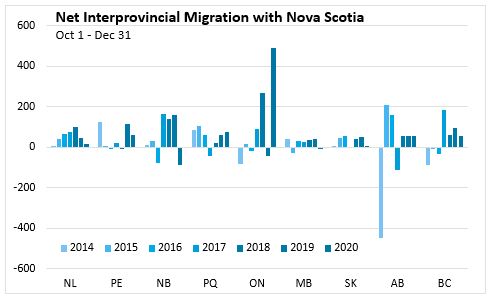
Source: Statistics Canada.
Table 17-10-0009-01 Population estimates, quarterly
Table 17-10-0020-01 Estimates of the components of interprovincial migration, quarterly
Table 17-10-0040-01 Estimates of the components of international migration, quarterly
Table 17-10-0045-01 Estimates of interprovincial migrants by province or territory of origin and destination, quarterly
Table 17-10-0059-01 Estimates of the components of natural increase, quarterly